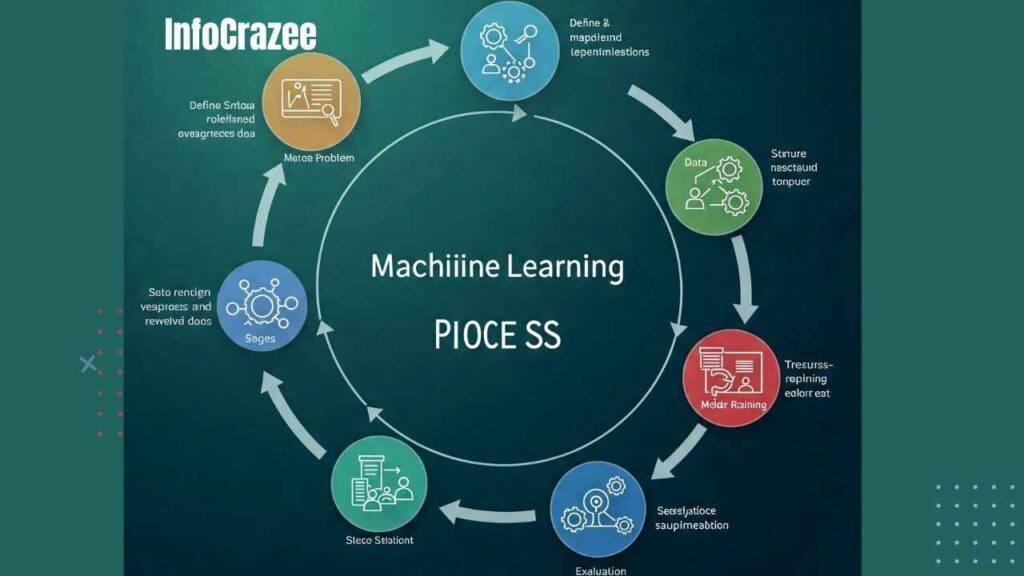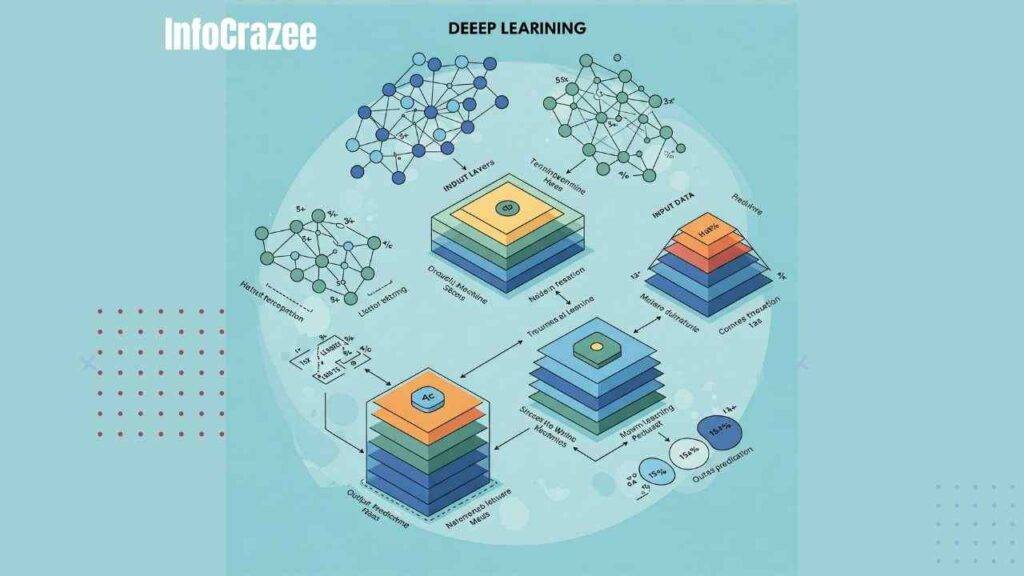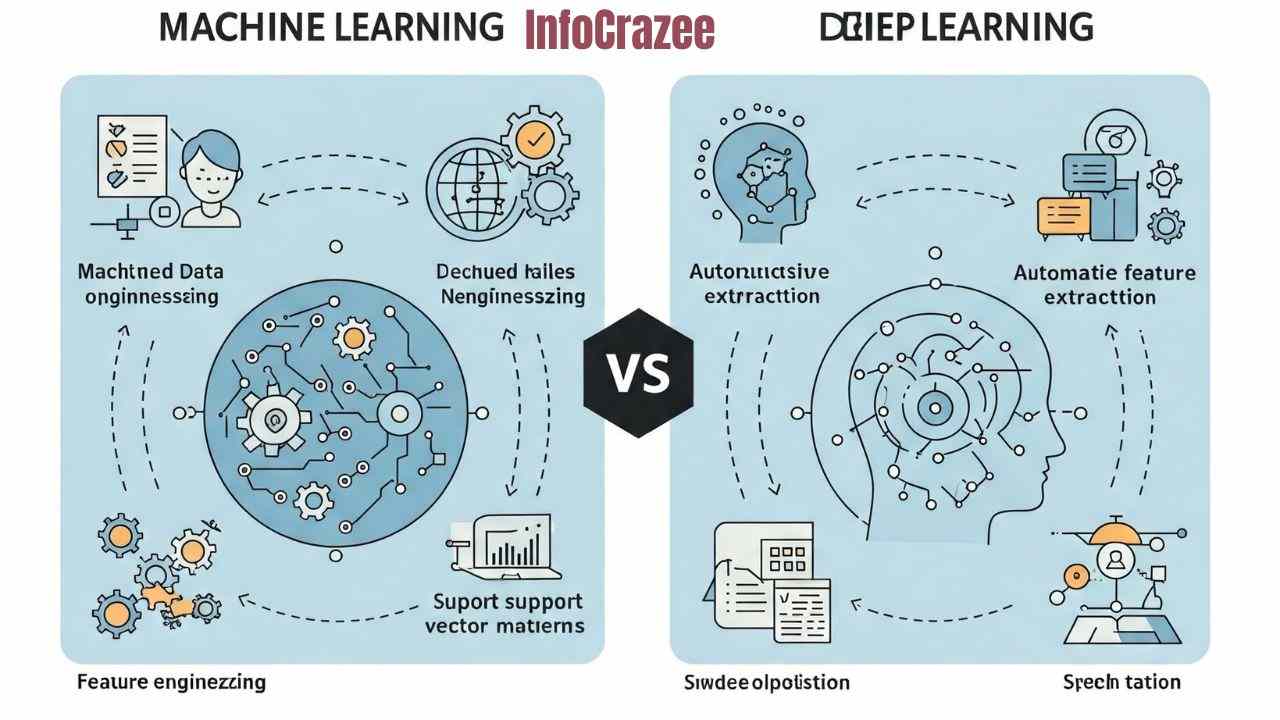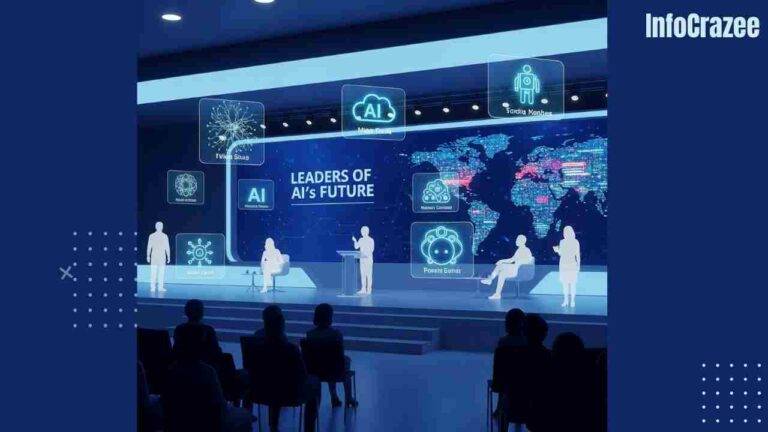Machine Learning vs. Deep Learning: What’s the Real Difference?
You’ve probably heard the terms Machine Learning (ML) and Deep Learning (DL) thrown around in the tech world, and while they sound similar, they’re not quite the same thing. If you’re curious about how these two technologies differ, you’re in the right place! At infocrazee, we love breaking down complex tech topics into clear, simple language. So, let’s talk about what these two buzzwords really mean, and how they each work.
What is Machine Learning?
At its core, Machine Learning is a type of artificial intelligence (AI) that allows machines to learn from data and improve over time without being explicitly programmed. Think of it like teaching your dog a new trick. Instead of telling it exactly what to do every time, you show it examples, and over time, the dog learns the trick on its own.

How Does Machine Learning Work?
In machine learning, the process typically involves:
- Training a model on a dataset.
- Teaching the model to recognize patterns or make predictions based on that data.
- Improving the model’s accuracy as more data is added.
For example, imagine you want to build a model to predict whether an email is spam or not. You’d feed the model a bunch of labeled emails (spam or not spam). Over time, the model will learn the difference and be able to predict the outcome for new emails.
Key Characteristics of Machine Learning:
- Data-driven: The system learns from data to identify patterns.
- Supervised learning: The model is trained on a labeled dataset where the right answer is already known.
- Flexible: It works well with structured data like numbers, categories, and text.
What is Deep Learning?
Deep Learning is a subfield of machine learning, but it takes things a step further. While machine learning uses simpler algorithms to learn from data, deep learning uses artificial neural networks that mimic the human brain. These networks can automatically extract features and patterns from data without needing much human input.

How Does Deep Learning Work?
Deep learning works by processing data through several layers of neural networks. Each layer learns to recognize more complex features of the data, starting from simple ones (like edges in an image) and moving toward more complex ones (like faces or objects). This process is called hierarchical learning.
For example, deep learning has revolutionized how computers recognize images. Given an image, a deep learning model can learn to recognize the objects within it—like people, cars, or animals—by processing the image through multiple layers of neural networks.
Key Characteristics of Deep Learning:
- Complex neural networks: The models have many layers, allowing them to learn deeper patterns in data.
- Large data requirements: Deep learning models work best with huge datasets, like millions of images or text entries.
- Minimal human input: The model can automatically discover patterns and features, making it much more powerful for certain tasks.
So, What’s the Real Difference?
Now that you know what each technology is, let’s break down the key differences:
1. Complexity
- Machine Learning: Simpler models with fewer layers of processing.
- Deep Learning: Uses complex models with many layers, allowing for more sophisticated learning.
2. Data Requirements
- Machine Learning: Works well with smaller datasets.
- Deep Learning: Requires a huge amount of data to be effective.
3. Computation Power
- Machine Learning: Can run on regular computers without needing too much power.
- Deep Learning: Needs a lot more computational power, often requiring specialized hardware like GPUs.
4. Use Cases
- Machine Learning: Works well for tasks like predicting trends, spam filtering, and simple recommendation systems.
- Deep Learning: Excels in tasks like image recognition, natural language processing (like chatbots), and self-driving cars.
Real-World Example: Machine Learning vs. Deep Learning
To better understand the difference, let’s look at a real-world example:
Machine Learning Example:
- Predicting House Prices: Suppose you want to predict house prices based on features like location, square footage, and number of bedrooms. A machine learning model could easily be trained with this data to make accurate predictions.
Deep Learning Example:
- Self-Driving Cars: A deep learning model is needed to help a car recognize road signs, pedestrians, and other cars while driving. The model needs to process huge amounts of image data and learn from it, which is a task deep learning handles really well.
When Should You Use Machine Learning vs. Deep Learning?
Choose Machine Learning if:
- You have a smaller dataset or more structured data (like numbers and categories).
- You need something that’s faster to train and doesn’t require heavy computing power.
- You’re working on projects like predictive analytics or recommendation systems.
Choose Deep Learning if:
- You’re dealing with large amounts of unstructured data, like images, audio, or video.
- You need the model to automatically extract features and make decisions on its own.
- You’re working on tasks like image recognition, speech-to-text, or autonomous driving.
Final Thoughts
Machine learning and deep learning are both incredibly powerful tools, but they serve different purposes. Machine learning is like the trusty old toolbox, perfect for many tasks that require simple pattern recognition and prediction. Deep learning, on the other hand, is like a high-tech workshop, where complex problems with lots of data can be solved with highly sophisticated models.
Understanding when to use each technology can make a big difference in your AI projects. Whether you’re working with structured data or tackling complex image recognition, there’s an AI approach that can help you get the job done.
FAQs
1. Can deep learning be used for smaller datasets?
Deep learning generally requires large datasets to be effective. For smaller datasets, machine learning methods are usually a better fit.
2. Is deep learning always better than machine learning?
Not necessarily! While deep learning is great for complex tasks, machine learning can still be the better choice for simpler problems with smaller datasets or when you need faster training times.
3. Do I need special hardware for deep learning?
Yes, deep learning models usually need more computational power, often from GPUs, to train efficiently. This makes deep learning a bit more resource-intensive compared to machine learning.






